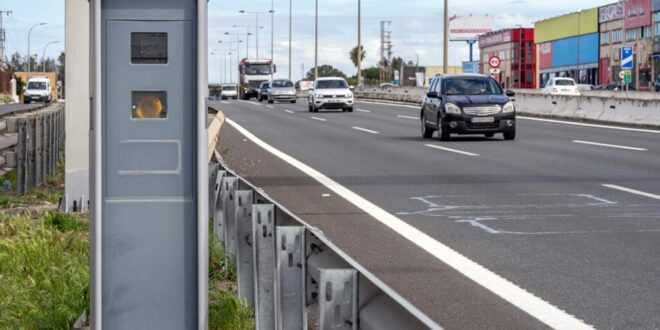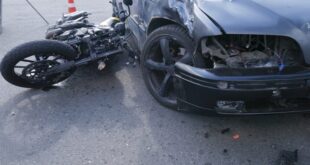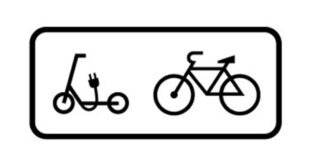One of Spain’s busiest speed cameras keeping a close eye on drivers – these high-tech devices are behind thousands of fines each year.
Credit : Rafa Jodar Shutterstock
You may have thought that you couldn’t drive in Spain for a ten-minute period without seeing a speed camera. You are not mistaken, especially if your route takes you through some areas where traffic fines are the highest.
It turns out there are a few places on Spanish roads where your chances of getting flashed by a speed camera are almost as high as finding a café con leche. According to the most recent statistics, three places are the worst, issuing so many fines that you would think they were printing cash.
Spain’s fine-printing machine
Start with the biggest one: Madrid’s notorious M-40 at km 20.2. Keep your wits when you pass MercaMadrid. This camera is a champion—no, really, it’s Spain’s undisputed leader in issuing fines. In just the last year, it caught more than 120,000 drivers driving too fast. It’s still issuing a new fine every 8 minutes, even with the “slowdown”. Blink and you might miss the sign—but you won’t miss the ticket when it lands on your doorstep.
Then there’s Málaga’s A-7 at kilometre 968. This road is a nightmare for both locals and tourists, snapping more than 67,000 motorists in the past year. If you thought that coastal drives were meant to be relaxing, then this stretch of road will make you nervous.
The A-15 in Navarra, located near Lekunberri at km 127.6, is third. In 2023, this camera caught almost 51,000 motorists. Imagine that seven people every hour are getting a ticket just to reach Pamplona.
How do they do it?
So what makes these cameras so ‘efficient’? It’s not a magic trick, but a variety of tools. There are radars fixed in cars, mobile units that can be hidden, and even the high-tech Velolaser. Not to mention helicopters equipped with cameras which detect speeders. You can also find red-light cameras, average speed checkpoints and special seatbelt cameras.
It’s not going to slow down. DGT plans to install over a hundred radars in Andalusia this year. What is the goal? To get Spanish roads even safer—or, depending on how you look at it, to keep the fines rolling in.
Why speed cameras are important for drivers in Spain
Officially, the focus is on road safety. The numbers are also in support of this: according to the traffic ministry, road deaths have decreased by 75% since the introduction of the first set cameras two decades ago. The reality is that most drivers aren’t interested in the statistics when they receive the dreaded DGT envelope. For many, speed limits can feel arbitrary—especially on stretches where the posted speed drops suddenly just before a camera.
It pays to follow the rules, regardless of whether you are a tourist on a roadtrip or a local who is in a rush. These fines can be expensive, and ignoring warning signs could result in more than a sunburn.
Be alert to speed cameras in Spain
So next time you’re behind the wheel in Spain, remember: speed cameras are everywhere—and some spots are real magnets for fines. Do not rely on GPS warnings, do not expect cameras to be clearly posted, and don’t believe that you’ll get away without a ticket.
Enjoy the ride, but keep your cash in your wallet. The only thing you should be collecting on your Spanish road trip are good memories—not speeding tickets.
 Costa News Spain Breaking News | English News in Spain.
Costa News Spain Breaking News | English News in Spain.





